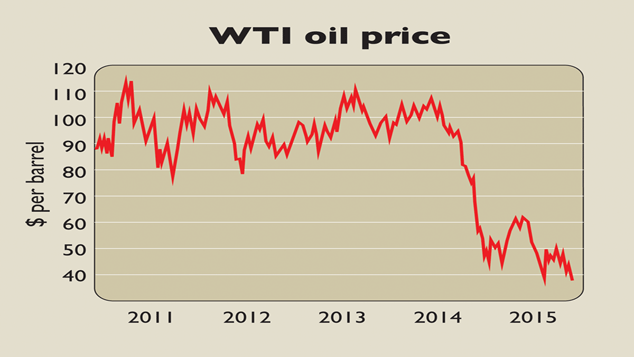
Crude oil has plunged to a six-year low, with the US benchmark price falling to below $38 a barrel this week, as traders come to terms with deepening divisions within Opec. The oil cartel’s 13 member countries met for a seven-hour meeting in Vienna on Friday to fix oil production levels, but emerged with the loosest agreement for decades, dropping all reference to production quotas.
Smaller producers lobbied for cuts, including Venezuela, Ecuador and Algeria, which are all feeling the squeeze from low oil prices particularly painfully. But Saudi Arabia, the cartel’s biggest producer, gave a “middle finger” to markets, says Time magazine. Saudi Arabian oil minister Ali Al-Naimi is “determined at any cost” to regain market share, by driving higher-cost producers off the market.
Opec is thought to be producing at record levels of around 31.5 million barrels per day, but has still lost share to non-Opec countries in recent years, including Russia, America and Brazil. Within Opec, the cartel is also grappling with Iraq pumping at record levels and the prospect of Iran upping its own production, when sanctions against the country are lifted next year. Rather than fight the glut, the Saudi strategy is to depress prices, testing the new entrants.
Russia has held firm, producing ten million barrels per day in November, close to a post-Soviet record. But Americais starting to buckle. American shale producers need a price of around $60 per barrel to break even, and activity is being cut back. The Baker Hughes rig count, which looks at the number of oil rigs active in America, fell to 737 last week, the lowest since 1999. That compares to over 2,000 in mid-2008, when oil was trading at $140 per barrel. Current prices make “drilling and completing wells a losing proposition in almost all oil fields around the country”, according to
The New York Times.
Opec may be “pumping full pelt”, but don’t bet that the cartel has lost its sway, says Javier Blas at Bloomberg. Instead, the oil market is reliving 1997 to 1999, when Venezuela emerged as a major new producer. Back then too Saudi Arabia responded by flooding the market, just as the Asian crisis kicked off, sending prices below $10 per barrel. Opec survived that crisis and saw prices rebound to $150 per barrel. “If the parallels hold, markets could be in for a wild ride.”